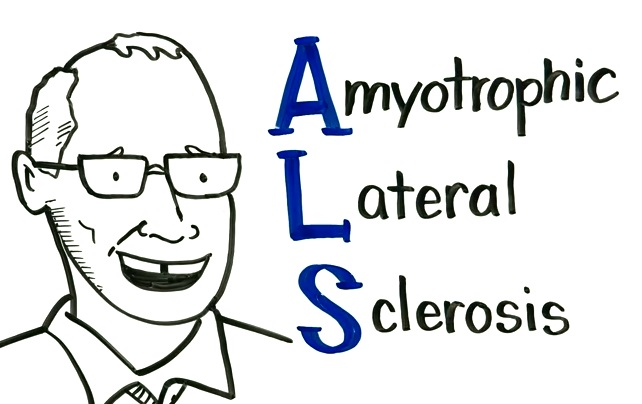Amyotrophic Lateral Sclerosis (ALS), a progressive neuromuscular disease that is typified by the degeneration of the brain’s and the spinal cord’s motor nerve cells. The disease usually progresses to such an extent that the motor neurons are unable to send signals to the muscles to make them move and as a result, the muscles begin to atrophy. The disease usually progresses fast and most patients die within 2-5 years as they are unable to breathe. Because it is a neuromuscular disease, amyotrophic lateral sclerosis does not affect the patient’s bowel and bladder or even sexual functions. Amyotrophic lateral sclerosis is commonly referred to as a syndrome because the disease manifests itself in a number of patterns; its occurrence is rare and not regular.
Symptoms
As amyotrophic lateral sclerosis progresses, the symptoms that become apparent include weakness and fatigue, loss of weight, thickness in the voice, difficulty in voice projection, impairment in the use of limbs, and especially cramps and twitches in the muscles of the feet and hands. As the disease progresses, patients are seen to experience shortness of breath and difficulty in swallowing and breathing. Typically, amyotrophic lateral sclerosis patients do not experience severe pain.
Treatment
Despite extensive research, no cure has yet been found for amyotrophic lateral sclerosis till now. The only course of treatment involves taking steps to make patients more comfortable. The options for treatment include medications for the relief of muscle cramp pain, excessive production of saliva, and other typical symptoms. Physical therapy is usually recommended so that the patient is able to maintain mobility and also to ease the discomfort experienced due to the stiffness of the muscles, cramps as well as retention of fluids. The patient needs to receive nutritional counseling so that he is able to get adequate nutrition even when it becomes difficult for him to swallow. In view of the difficulty in speaking that patients suffering from ALS experience, it is essential that they receive speech therapy so that they can maintain verbal communication to the best extent possible. They also need to receive communication training in non-verbal techniques to prepare them for a time when the progression of the disease will make speech impossible.
Patients can be helped to go about their daily activities like toileting, bathing, dressing and eating with a number of assistive devices like corrective braces, splints, reach devices and grab bars. Functional independence can be maximized with the use of special equipment such as electric beds and wheelchairs.
Physical Therapy
Patients suffering from amyotrophic lateral sclerosis can be helped to a great extent to come to terms with their physical disabilities with physical therapy. Not only can patients maximize their existing capabilities but also physical therapy can go a long way to prevent pain from stiff joints and prevent more motion loss. Physical therapists can evaluate the mobility capabilities of patients including the range of motion of joints and their strength to enable them to provide guidance for common tasks like getting into or out of chairs or walking about. Physical therapists will be able to offer patients advice on improving motor function and dealing with physical disabilities, recommending appropriate exercises for maintaining flexibility while taking care to reduce and prevent pain. They will also provide instruction on how to best use braces or other assertive aids so that the patients can maximize their independence.
Guidelines for Exercising
Aerobic exercises are usually recommended for increasing muscle efficiency as well as endurance through enhanced cardiovascular fitness. Exercising must always be done in moderation as fatigue may cause muscle weakness to increase. Patients can indulge in stretching exercises to reduce the intensity and frequency of muscle cramps. The exercises should be done daily. Range-of-motion exercises are very helpful in moving the joints through their entire motion range and should be done daily to the extent the weakness of the muscles makes them possible for reducing joint stiffness and pain. ALS patients should not work out with weights because this could result in muscles becoming weaker.
